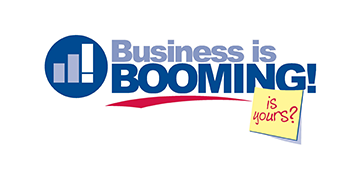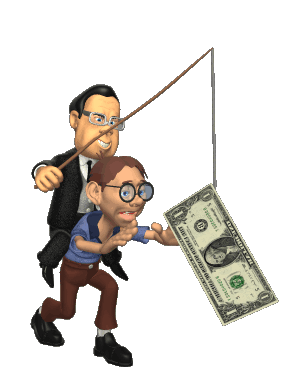
Entrepreneurs or those who would like to be …
So … you want to buy, start, tune up, or sell your business?
You think you’ve got a handle on your cash flow, you’re making a little profit,
and you’re taking a paycheck … or not …
- But you just can’t keep good employees.
- And you’re unsure about how many employees you should have.
- You want more information on strategic planning, operations planning, and how to keep your business on track.
- You want to understand your financials and how financing really works.
- You’re wondering what a proper business planning cycle looks like.
- You want to know that your business is healthy.
You’ll Want to Understand The Anatomy of Business
Why Anatomy?
We’ve all heard of the high rate of business failures in this country. I’ve been working for many years to help stem that tide, and I’ve seen how businesses function like living beings. In anatomical terms, successful businesses share similar vital signs ‒ cash flow, profit margin, etc. So, what does it take to keep businesses alive and healthy? I’ll explain, but first …
 Who am I ?
Who am I ?
You’ve probably met me before.
Maybe at my blog, SueCanyon.com, which offers short subjects and ancillary concepts that can benefit your business …
Or at SuperchargeYourCashFlow.com, where for those who wonder, “Where did the money go?” I show you how to find cash that may be hidden in your business. From an Anatomy standpoint, the Super Charge eBook has you cleaning out (like you would cleanse your body of toxins) and ‘cleaning up.’
Or at ProfitPowerSeries.com, where I teach business owners how to rescue their own businesses without giving up equity or control. Imagine you’ve almost had a heart attack, and now the doctor is telling you that you need to change your eating habits, get some exercise, and reduce your stress. The Profit Power Series essentially teaches you new business recipes that you can use to lose unnecessary weight (inefficiency) and become healthy.
The Anatomy of Business Series
is my Last Attempt to Help You Grow Through Strategy, Planning, Organization, and Control
Once you’ve adopted the new behavior you learned from the Profit Power Series, you’ll learn to maintain your new business in its clean, sleek body so it never falls into bad habits again. Anatomy of Business helps you map out where you want to go, how fast, and with what fuel and other resources so you can drive the train, rather than shoveling your hard-earned money down a hole and letting your business go down whatever track it will.

Don’t Become One of “The Walking Dead”

I want to keep you from becoming one of what I call The Walking Dead. While bankruptcy statistics paint a grim picture of business failures, those figures don’t include businesses that are failing on their feet. These businesses have been so unhealthy for so long that owners have injected all their investment monies and retirement funds. They’ve taken out second and third mortgages on their homes, sold investment properties, liquidated children’s college funds, and run up high credit card debt, all in a futile attempt to save the sickly creature from a terminal condition.
Have you met anyone like that ‒ a business owner who lost everything, including their family, over the burden of a business that never delivered a profit because they didn’t have the tools they needed to succeed?
So, You Don’t Need Another Sales Page
You’ve probably seen two already. (If not, click on one of the links above.) You don’t need to waste more time being sold because, if you’re not convinced by now that I can do what I say I can, well …
I’m only one person, but there are sooo many of you who need a few basic tools and understandable instruction for this well-established institution called business.
Each of my three offerings stands on its own, but each gives the you different depths of subject matter that complement one another.
The Anatomy of Business Workshop Series was Written for:
 Business owners who wish to learn how to make plans that make sense and how to control their business so it runs itself … in the direction … and at the speed dictated by the plan.
Business owners who wish to learn how to make plans that make sense and how to control their business so it runs itself … in the direction … and at the speed dictated by the plan.- Owners who wish to sell their business for much more than a fire sale.
- Folks who would like to buy or start a business of their own and have it succeed beyond a few years.
With Anatomy of Business, you’ll enjoy 14 animated video workshops, each about an hour long, sent at the rate of one a week, packed with exercises so you can track your progress as we go along.
You’ll learn:
A deeper look at Strategy, the brain of your business ‒ recognizing who you are in terms of your skills and experience, matching that with what you want, what you need, and how to get there …
A more in-depth look at Marketing, including market planning and pricing …
How to define, fund, and manage Capital Projects …
Operations Planning, setting up the internal systems like the heart, kidneys, and liver …
Organization planning, solidifying the skeleton of your business …
More about Banking relationships and various loan instruments, to keep the blood flowing …
Productivity Measurements, like pulse monitoring or checking your weight …
Variance Analysis, or what to do when your weight (spending) is out of control …
Quality Improvement, like maintaining an exercise program …
Technology management, akin to surrounding yourself with the latest exercise equipment …
And much more …
I promised that you wouldn’t be subjected to another sales page. As I mentioned, you can read sales pages if you like at SuperchargeYourCashFlow.com and ProfitPowerSeries.com. You can also read my blog at SueCanyon.com.
The price for the Anatomy of Business Series ‒ focusing on Strategy, Planning, Organization, and Control ‒ is only $1477. That’s it! It’s hard to find a single university class for that price. And you have 4 weeks to decide if the knowledge and exercises are right for you.
Here’s What Folks Are Saying
Proactive Rather Than Reactive
“Sue took our company, confused and adrift by its growth, and set it on a course for the future. The organizational structure was redrawn and streamlined, an accounting morass was righted, and a slightly demoralized workforce was motivated and united into a common vision. For the first time … we are proactive rather than reactive.” – Hereford, TX
Simple, Understandable and Concise
“I am especially pleased with Sue’s abilities, skills, and knowledge and with her ability to pass them on to me in a simple, understandable and concise fashion. I feel that I have just completed my first year of a two-year MBA program.” –
Phoenix, AZ
Appreciative of This Style of Learning
“I had some pretty rookie thoughts of how I perceived things are and how I thought they should be. I have been shoved around in a positive way, almost without knowing it and I am ready to go forward fast and far. … This is all (due to) Sue’s teaching methodology, and I know that (we’re) all very appreciative of this style of learning.
“Putting this kind of light on something that you have built is not very flattering, but now I have a path out of the rut.” – Richmond, CA
More Orders and Reduced Costs
“We learned about overhead absorption, cash flow, break even, and how to use that (information) to make decisions about pricing. We are already looking at more orders and reduced costs.” – Las Vegas, NV
CFO for Hire
“I have come to think as if your program could be called CFO for hire.” – Las Vegas, NV
Eye-Opening Findings
“Sue evaluated the company’s systems and procedures from the top down and from the bottom back up. This resulted in some very eye-opening findings. The changes she recommended have been implemented, and the results have had a significant improvement to our bottom line.
“Sue’s down-to-earth approach … made people open up to her because they felt comfortable with her. Consequently, the information obtained from her interviews allowed us to get a better picture of what was really happening in the company and what the employees really thought.”
‒ North Hollywood, CA
“Rock-Solid 4 Week Unconditional Guarantee”
My personal promise to you:
Get started on the system. Start implementing the tools, techniques, and tactics in your own business … enjoying the increased profits … the streamlined processes … the lower stress levels … and more free time to actually enjoy your life.
Use it for 30 full days (you’ll get four of the 14 workshops in that time) and if you don’t agree this is the best Series for taking your business to the next level, just ask for a full, no-hassle, no-questions-asked, we’ll-still-be-friends refund.
I’ll RUSH every penny of your money back to you.
Fallacies That Inhibit Success
So rather than trying to convince you to buy something, I’ve put together some common fallacies that people share and believe ‒ fallacies that make it difficult to have a healthy business, fallacies that make your business sluggish and waste your time and money.
Fallacy #1: All You Need to Do is Sell More

Have you ever noticed that most of the business repair advice out there has to do with improving your sales? Okay, yes, selling more can make you more profitable, if, and only if, your costs are lower than your price. Most business owners have no idea what their true costs are. More sales, when you’re in a loss position will have you losing your shirt. Many business owners stick their head in the sand: “If I don’t know what my costs are, then I can ignore the stress between what it really costs and what I’m charging … because I know I can’t charge more for my product.”
The Anatomy of Business Workshop Series will teach you how to plan and control your business, to get control of your costs, your processes, your customers, your vendors, and your employees. Once your efficiencies are under control, then your costs will likely be more competitive, and you then can sell more.
Fallacy #2: You Know Your Costs
I know there are a lot of businesses out there that do have decent bookkeepers and accounting software that produces good reports ‒ figures you can rely on, but how do you know if you’re one of the lucky ones?
If you DO have reliable numbers, do you know how to read your future in them?
And, if you DON’T, how could you possibly know what your costs are?
One of my clients was a manufacturer of a metal product. They were very proud of a machine they had. They would load it with raw material, and it would run all day without the need for human intervention. It had three output buckets to catch the finished products. Each chute had a counter on it. I asked what the different chutes represented. They told me that the machine performed its own quality check. If the part was too long, it would fall into the right-hand bucket, if the part was too short, it would fall into the left-hand bucket, and if the part was within spec, it would fall into the center bucket.
I looked at the counters and could see that about 33% of the parts were in each of the buckets. When I asked why two-thirds were bad, they said that the metal that the vendor had been sending was not quite right for the product, so they had to reset the machine quite often. I asked if they had accounted for three times the cost of the raw material in the pricing of the product. With a blank stare, they answered, “Uh … No ….”
I asked if the vendor had been notified that the raw material was not good. Again, “No.” I suggested that they return the bad material, specify some quality constraints, and reload the machine with good material.
You see, many other customers of vendors are requiring that their materials meet certain specifications. If you’re not doing the same, you’ll get what’s left, and it’s likely to be material that no one else will take. This can cost you BIG time!
And if you’re not paying attention to the fact that, in the case of the metal part, the part is costing three times what it should, you’ll be taking money out of your own pocket to send the parts to your customer.
I worked with an owner who had annual sales of $10 million. He was making 0.2%, that’s point 2%, profit, and had been for many years. After calculating his REAL costs, it was clear that he was making about $600,000 profit on the product that represented $2 million of his revenue, while he was losing almost that same amount on the product that represented the other $8 million.

Can you imagine the hassle of retaining the infrastructure required to build the losing product, keeping difficult customers, not being able to pay vendors, dealing with five times the employee issues, and not taking a paycheck … all for the sake of being able to say you had $10 million in revenue? Even though he took money out of his own pocket to do it, he chose to continue on as he had. He finally succumbed to heart failure, and his wife lost the business that was supposed to be their vehicle for retirement and security.
Then there’s the lady who was an employee at a small shop for 10 years. The owner wanted to ‘retire’, and kept pestering her to buy the business from him. I asked her how much profit the business made. She answered, “$25,000 a year.”
Well … okay … for a hobby, that might be enough. “What is your markup?” I asked.
“Two percent”, she replied. “Two percent???!!!” $25,000 in profit with a 2% markup for a tiny little shop in a small town … that dog don’t hunt! So, I looked into the figures for myself. Aside from learning that the accounting was grossly mis-posted and discovering that the former owner had been losing money on the business for years, I now understood that the $25,000 figure was revenue, not profit. And after more investigation, I learned that it was not a 2% markup, but a 200% markup. People will do what they’re going to do, and, against my advice, she bought it anyway.
There was a lot of work to do there, and I offered to help her, pro bono. Once we recast the figures to reflect the real score and applied a simple calculation to them, she could see that she would have to improve her sales to $58,000 per year to make any profit whatsoever. In her current location, that would be impossible, and she agreed. But because she was afraid to spend a little more on rent, she stayed in the same location for 15 months before she was forced to close the doors. She lost $17,000 of her meager retirement funds in that time.
If You are Looking to Buy a Business, You Have to be Able to Recognize Whether or Not the Accounting of that Business is Reliable.
And, if the math doesn’t work, it just doesn’t work. Thank goodness she didn’t liquidate all of her retirement funds to keep going, as many small business owners do. Unless she expanded to a better location, there would have been no end to the bleeding.

Another employer refused to look at how much his product was costing.
He swore he knew exactly what his product cost him, but he was way off. By the time this business closed, the family had maxed out over $100,000 in credit cards, had no visible means of retirement income, and had three mortgages on their home. The husband and wife both ended up having nervous breakdowns.
Many clients in this position don’t want to know what their costs are because they don’t think they can do anything about the cost. They feel that, as long as they remain in the dark, then maybe something magical will happen in the future to make the costs bearable.
You’ve heard the definition of insanity: Doing the same things and expecting different results.
They don’t understand that the solution is a simple matter of understanding that, only when you determine what your true costs are (something that I’ve NEVER seen a small business owner do properly), can you begin the task of reducing those costs.
Now, don’t let that scare you away. There are nine, distinct variables you can attack to lower the cost of your product. Some of them will surprise you, and all are astonishingly easy to get traction with.
These nine variables are explained in great detail in the Anatomy of Business Workshop Series.
Fallacy #3: Filing Bankruptcy is the Only Answer
There are many things that can be done to manage a business to increase cash flow, minimize hassles, and reduce the energy required to run the business.
I’ve found so many owners who were having the same problems … problems that they couldn’t find answers to … problems that you would think someone had solved before … and published. But, no.
Here we are well into a new century, and we still have little access to solutions that make sense for most business owners. I’ve been studying this problem for a long time. I thought these problems were isolated cases and that if I just worked with one business at a time, I would be helping to slow the rate of bankruptcy. But what I found is that most businesses are in the condition that I thought was isolated, and that the businesses that got help with their systems excelled far past their competition.

I want EVERYONE to have access to this knowledge.
So, I created the Anatomy of Business Series to replace many seriously damaging false beliefs that keep small business owners on a reckless path of self-destruction.
I want to teach as many business owners as possible, sensible business concepts with step-by-step instructions to defend against business failure and to keep small businesses strong.
Fallacy #4: You Can Sell (or Buy) a Business and Get Paid (or Pay For It) From Profits
Most small business transfers are between family members, friends, or employees. Many second-generation companies fail, and most people believe that the failure has something to do with the kids not putting in the energy that would maintain the business as Dad or Mom did. Well, that’s true in some cases … but almost all small business transfers set the buyer up for failure.
Let’s examine why an owner wants to sell. Why do YOU want to sell? Because you’re tired of working 70 hours a week? Because you’re tired of not having enough cash to pay your vendors? Because you’re tired of bowing to your difficult customers? Because you’re tired!
So, you think that putting new energy into the business will solve the problems, as if energy is the answer. Well, it’s not. So, you sell (or buy) a losing proposition, hoping that applying more energy will magically turn it into a winning business. A company that is losing money will NOT generate any more cash than it did in the first place. Well … not because the new owner puts more energy into it. So, tired owners sell, trying to get as much cash out of the business as they can before it fails. Innocent buyers now own a losing proposition, on top of which, they have agreed to a payment so high that they couldn’t possibly pay it. The subsequent legal hassle makes it so much worse. I’ve seen it nine times out of 10.
Whether you are buying (at a good price), or selling (for a good price), there is a way to evaluate a business beyond what the broker tells you. The Anatomy of Business Series will help you learn what to look for, what to clean up and repair, so you can get top dollar for yours, or evaluate what you would need to do to repair a loser so you could pay less, solve its problems, and make it profitable.
Fallacy #5: Your CPA is There to Help You Make Business Decisions
Not!
Your CPA is there to report the validity of your accounting records for the prior year and file your tax returns. Period. They could also audit your use of your accounting system, including cleaning up your chart of accounts, but rarely do they do this. Nevertheless, they certainly have no business ‘helping’ you make future business decisions.
Let me give you an example:
One company, a family business with revenue of $3 million, had been in operation for some 18 years and had made a good profit for all but the last four years. After living within their company for a couple of weeks, I made a stunning discovery. The owner was very proud of an American Management Association course that he had taken four years earlier on Cost Accounting. He had subsequently asked his outside CPA to separate the actual cost of his two products for him.
The CPA blew the dust off his old Cost Accounting text, reviewed the first couple of pages, and produced a report that stated the following:
The distribution product made the company $11.00 for every $33.00 sale.
The manufactured product made the company $3.00 for every $45.00 sale.
Well, I don’t expect that to mean much to some of you, but the fact is that distribution products ALWAYS make a very small percentage compared to manufactured product. So, these numbers made me tilt my head and raise an eyebrow.
I set to properly calculating the answers from scratch, and lo and behold,
up popped exactly the reverse!
So, I decided to call in the accountant. “You’ve been with this client
for many years,” I explained. “You must know something about these
figures that I don’t know for my answers to be so different from yours.
Can you help me out?” The CPA was very gracious, and showed little emotion.
“Nope,” he replied. “Your calculations look good.”
I was stunned. The owners of this business had made strategic decisions for the past four years based upon information that was wholly incorrect and which had caused them to lose all of their ability to make profit for four years!
The President and I discussed how we were going to correct the situation. We reversed the decision made from the faulty information and went from zero to $450,000 in profit the first year!

That was more than 20 years ago. Since then, I’ve spent a considerable amount of time working with small businesses and accountants because I wanted to discover why this sort of thing happens.
So … What’s The Deal with Accountants?
Here’s some of what I learned about the accounting industry that you need to know. I wanted to discover what was wrong with the information given to business owners that would cause such failure mechanisms, why accountants give such poor information, and why no one else out there seems to want to help (except for pricey consultants who, even then, may not have the right answers for you).
First of all, I know you don’t want to learn accounting. That’s why you hired a bookkeeper … to take care of the books, right? But, how do you know if they’re doing it correctly? Do yourself a favor. Right now, go look at your chart of accounts … not the whole thing because odds are that much of the listing is not used. Just look at the expenses list on your income statement. Is it in alphabetical order? That’s a waste of time. The accounts should be numbered instead. And does your Cost of Goods Sold category have only one or two accounts in it? If either of these are true, then your bookkeeper does not know enough about accounting to do you any good whatsoever.

Can You Imagine Going Bowling or Playing Golf
Using a Scorekeeper that Doesn’t Know How to Keep Score?
Even if your expense accounts are in a more sensible order and you do have more than one cost of goods sold account, it doesn’t mean your bookkeeper is posting correctly. Are there any credit card accounts in your expenses list? If so, they’re in the wrong place. Now look at your Balance Sheet. Do you really owe what it shows for your equipment and vehicles? Call one of the accounts and see if the balance shown on the Balance Sheet closely reflects the balance that the bank shows. If not, I promise you, there are many other problems. You could be earning more money than your reports show, or you could be earning far less.
And, if either you or your bookkeeper say, “What’s an Income Statement or a Balance Sheet?” then the problems are far worse.
Why does the account list matter? It is the skeletal basis of your accounting system. It is what tells you the score, and without the score you have no control over your business.
Moreover, if your chart is a mess, then your outside CPA has not taken the time to educate you what a proper account list should look like (nor how to read a Balance Sheet, or even how to help your bookkeeper to keep it correct.)
Why?!?
There are two reasons for this. One is that many of them don’t know themselves what a proper chart of accounts should look like for business control. In fact, they are often the purveyors of the alphabetical list and the single (or no) Cost of Goods Sold account because accountants only look at and care about reporting the past, not about looking into the future. This can be disastrous!
And secondly …
They Are Trying to Save You Money!

Accountants have this annoying habit of wanting to save you money … to the detriment of your company.
Let me explain. First, let me say that I was fortunate enough to have been hired by one of the most prestigious accounting firms in the country to run their consulting division, and that experience allowed me to gain great insight into the disconnect in their process.
To understand what has gone awry, we must cover a little background about the accounting profession. And, let me say here that accounting is a venerable profession. God love them for caring about debits and credits so we don’t have to. But there are many flaws in the system surrounding the work of accountants as they try to apply it to business owners.
I’ve asked, and many accountants choose that profession because the schooling and the work is not difficult, they typically would rather work alone with numbers than talk with people, the work appears to be prestigious, and it is marked by many rules, so interpretation and original thinking can be avoided.
The prestige, I believe, comes from a belief by clientele that, once someone receives the CPA credential, their advice is then sanctioned as correct by our government. In fact, all that the credential is meant to assure is their ability to properly and ethically construct a picture of the history of the accounting figures within a boatload of constraints. And, generally speaking, given all those constraints, they’re pretty good at that.
Anyway, they earn their accounting degree (sometimes) and then become employed by an accounting firm so they can serve their requisite two years (or so) of auditing in order to earn their CPA credential.
An oversimplified description of auditing goes something like this: the young CPA wannabe is invited into a company and asks to see the Accounts Receivable list. He or she sits down at a phone and contacts a sample of the customers on the list to verify that the client actually owes the money that the receivable list says they do. If all the figures in the sample match what’s on the report, they call it ‘good’ and move on to the Accounts Payable list.
Here they sit at a phone and ask vendors to verify that the amount on the payables list reflects what the vendor says is owed. If that sample matches, they move on to inventory.
They go into the warehouse, count a few inventory bins, and compare the count to what the inventory report shows for those part numbers. If the counts match, then they bless the inventory figures and return to the office.
They review the assets on the balance sheet, and audit the loan and bank balances. Then, they write one or another of several permissible boilerplate letters attesting to the goodness or not of the figures as they were found.
After two years of this sort of behavior and passing their CPA exams, they are blessed with a credential and begin to ask what they have to do to move up in the accounting organization. The answer is ‘Sales’. They must learn how to bring more clients into the organization so there is enough work for another junior accountant, at which point the new CPA can be promoted to manage others.
Sales. Their best bet is to take sales classes and earn a golf handicap. Is it any wonder that there is so much emphasis on sales and almost none on improving an operation?
As an accountant moves from bottom to top, they do less and less accounting and more and more sales. Nowhere in their training or experience do they get ANY view whatsoever into running a business operation!

This model allows them to understand only two parts of business …
… revenue, focusing always on more …
… and fixed costs, focusing always on less.
Their business model dictates that, if they bill more hours, they need more people to do the billing. So, it makes sense for them … more sales = more billing = more people = more managers. It’s sort of a pyramid scheme, but that model just doesn’t work for most small business owners.
Most of you are not billing hours. Most of you are making something or providing a service that doesn’t involve hours. For most of you, there is a component of efficiency, of fewer hours, of less material, of fewer managers, that accountants just don’t understand.
But they do understand fixed costs (overhead costs) like rent and telephone. For them, these are the only costs they can control, so they try to control them within your business. Why? Because you thought they were the right resource to help you.
Fixed Costs are … well … FIXED!
That means there is very little you can do about them. I break out in hives every time I hear a client tell me that their accountant wants them to move to a smaller space because they’re paying too much rent. The cost of moving and losing customers always outweighs a move to save rent. There must be a better reason, a huge reason for moving … and it must be a strategic decision that has nothing to do with saving rent.
 I call it ‘chasing light bulbs’. Accountants want clients to do the equivalent of running around shutting off lights because it is one of the few ways they know of to affect costs … a cost that is … well … FIXED!
I call it ‘chasing light bulbs’. Accountants want clients to do the equivalent of running around shutting off lights because it is one of the few ways they know of to affect costs … a cost that is … well … FIXED!
And where would an accountant post the fees that you must pay to your accountant for their help? In the fixed expenses category. So, if your accountant is going to help you … in their eyes … they must keep fixed expenses down, and one way they do this is to not charge you … by not doing some things for you that might help you out … like teaching you what is wrong with your financial statements or how to read them. Go figure!
But, Operations!
Now there’s a place to improve your business costs …. It’s where theft sticks out like a sore thumb. It’s where improvement opportunities wave at you from the figures: “Look! Here I am, come and get me!” And accountants know nothing about it.
But I do. And you will, too. If you’ve spent the little money on the Supercharge eBook, that helps you find cash that’s laying around your business, or if you’ve taken the business rescue lessons from the Profit Power Series, congratulations! You’re ready to move on to learning how to guide your business confidently, successfully, into the future with the Anatomy of Business.
Fallacy #6: Employee Theft is the Number One Reason That Small Businesses Fail
Well, that’s a big one, but I have found that vendor theft is a much bigger problem than employee theft as far as materials are concerned.
For example: I calculated the recipe for a manufactured product, and discovered that there was about $200,000 worth of inventory missing! Now, this inventory consisted of piles of sand and rock! Was someone backing up a truck to the mini-dunes in the middle of the night and hauling it away? We could find no evidence of that. We could not come up with a mechanism for the materials to have disappeared. Quite some time later, we discovered where it was going ….
The owner and I stood and watched as a truck driver dumped a load of sand in the yard. The driver ran over to the president to have him sign the ticket, and then got back in his truck and left. I asked the owner how much sand he had just signed for. “22 yards,” he replied.
“Well,” I said, “I may be all wet, but I know how much a trailer should hold, and that doesn’t look like a full load to me.” The owner walked over to the pile and used his time-tested method of calculating the inventory in the pile. He concluded that the load he just signed for contained only 16 yards of sand. The driver was stealing from the company without ever bringing the product to the yard. I see evidence of this sort of behavior, everywhere! Having a good recipe and an inventory management calculation using accurate accounting figures is essential to keeping vendors honest.
Fallacy #7: All You Need to do is Improve Your Human Resources Skills!
Another common business repair resource seems to focus on Human Resource Skills. Does it make first-order sense to YOU that employee handbooks or determining benefits packages can solve your company’s systemic problems?
And then, is their information even useful? If you were to do an internet search on “employee appraisals”, you would find an abundance of free forms and how-to’s claiming to be the right way to perform this important function. But a closer examination shows that almost all the resources out there offer appraisal forms that are littered with what amounts to subjective measures. These are what I call feel-good measures. They attempt to measure how one person ‘feels’ about another person’s performance.
“Works well with others.” How do you know? What does “works well” mean? Does it mean the same to the ‘measurer’ as it does for the ‘measuree’? Rarely. Objective measures, or those you can count, are a much better measure of an employee’s performance, or contribution to the bottom line.
But there is a more fundamental problem. Most employees believe that the purpose of an appraisal is to give a raise. Since most owners were once employees themselves, most owners believe this also. Similarly, many HR ‘experts’ spread this erroneous impression.
The truth is, the purpose of appraisal is to attempt to manage the behavior of an employee toward ends that promote the health and strategy of the company. This can be tricky, and if it’s not done properly, you can even sabotage your productivity. The same goes for incentive programs, which are promoted carelessly by some HR ‘professionals’.

You see, it seems to me that most of the ‘help’ out there for small business deals with issues that are completely unrelated to the internal workings of the operation ‒ the part of the business that actually delivers the product, the part that consumes 60-80% of your revenue. It seems as if this part of business is a mystery to most business advisors.
In the Anatomy of Business Series, I teach you what you need to know to build an organization structure that makes sense for each stage of growth you move through, then how to write a useful job description that accomplishes the goals of your strategy. You’ll learn how to evaluate employee performance against the job description. When you’ve completed this work, all of the cars in your train will be hooked up and moving in the direction you want them to go without having to go back to the station to bring each one, individually, up to where you are.
Fallacy #8: You Have to Lose Money for at Least Two Years Before Your Business Will Start Making a Profit

There is no magic pill that one can take at the end of two years that will suddenly turn a losing business profitable. I believe this two-year milestone idea came from inverting the statistics we’ve all heard that most businesses fail within two years. That means, by default, if you’re still in business after two years, then you’ve made it! Right? Poppycock!
A losing proposition on day one will be a losing proposition on day 800 if certain things don’t happen on days two, three, four, and all the rest.
Then you start liquidating your retirement fund … then the equity in your house … then the kid’s education fund … betting that soon you’ll start being able to pay yourself back. And worse yet, you don’t take a paycheck for that ‘couple of years.’
The things you must do to make and keep a business profitable will work whether you start them on the first day or any other day. But the sooner you start, the more competitive you will become… the stronger, more confident, healthier … and more profitable!
Fallacy #9: Your Insurance Broker is Looking After Your Best Interests
Phooey!
Insurance brokers are paid a commission on your premium, so it’s in their best interests to sell you insurance that you don’t need, put you in improper groups, and keep you with companies that have you paying higher premiums than you should.

Two of my last three clients were paying fire insurance … on bare land … in the desert … ’nuf said.
And two of the same last three were paying far too much on worker’s comp insurance because the insurance company assigned the wrong codes. Both clients received more than $60,000 back on their worker’s comp policies once we applied the proper codes.
Fallacy #10: You Can Run a Business Better Than Your Boss Could
Most small businesses are started by frustrated employees who are particularly talented at some important skill. Whether he or she could be the “top salesman if I could just be turned loose to do this …”, or the “best road-grader operator, but no one appreciates my art …”, or “the only one who can run this machine and get these parts out to the customer’s specs …”, the frustrated employee has some insight into how he or she could ‘do it better’ than the boss, the owner, the sales manager … and chooses to go into business for him or herself.
What most people don’t realize is that the art of ‘business’ doesn’t really have anything to do with BEING the top salesman, operator, or technician. It has to do with being the best BUSINESS MANAGER. And you don’t have time to learn it as you go along … at least, not fast enough to keep you from ruining your chances of success.
But now you CAN run your business better than your boss. The Anatomy of Business Series is designed to make you a better business manager so your business prospers and you achieve your goals.
Fallacy #11: Business Books and Consultants Have All the Answers You Need
You will find many great books that look like they could help, but then you begin reading and discover that most of them fit into four categories: how to sell more, how to do strategic planning (in their opinion, same as sell more), how to discipline your employees, or how to get your head straight so you can think like an entrepreneur.
But these aren’t the answers you need. You need to know why you don’t have any money and how to make your business better so it makes more money and doesn’t take up so much of your time.
Am I right? Of course, I am. But the answers aren’t in the books … at least not the books that are out there right now … at least not that I can find.
Do you want evidence? A recently published book was written by a CMA. CMA stands for Certified Management Accountant, which is the Institute for Management Accountants’ credential that is designed to begin to address the very problems I am bringing to light. I am a CMA.
In this book the author uses a plumbing business as her example, claiming that this type of business faces all the problems that most small businesses face …. Balderdash! A plumbing business is conducted very much like an accounting business. A manufacturing concern has FAR MORE problems than a plumbing business would ever encounter. And plumbing, like manufacturing, rarely has a retail component with all its issues.
The author goes on to suggest that, “The only way to reduce variable costs” is to buy cheaper product (which encourages quality problems) or buy in higher volume. Buying less expensive goods is only one of nine things you can do to reduce your variable costs, but other factors must come into play before you simply “buy cheaper”. Higher volume encourages ‘inventory creep’, and nowhere does the author mention the cost of labor as a variable cost.
So Then, Where DO You go? Expensive Consultants?

You can’t afford to pay yourself a salary, so how are you going to afford expensive consultants? And who says consultants know what you need anyway? Well, I’ll tell you, there are some good ones out there, but they are very hard to find because their clients don’t want to share them with anyone. And they are very expensive because the good ones understand business as a whole, while most consultants generally know about only one or two components of a business system.
You need someone who knows how to get your entire organization to go from where it is to where it needs to be so you can be confident in taking a vacation, a suitable paycheck, and have something of value to sell or pass on to younger generations.
I am one of those very expensive, very successful consultants who has been repairing businesses my entire career and enjoying it immensely. But now it’s time to pass on my knowledge to everyone who wants it because the knowledge should have been available to you all this time. As I mentioned earlier, I thought that the problems that some small business owners have were isolated incidents, but over the past few decades I have learned that these problems are the rule rather than the exception.
And I am appalled to know that the knowledge about how to keep your business from failing has been kept from you all these years.
I’m sure you will enjoy the Anatomy of Business Series, comprised of 14 videos, delivered one per week. It is presented in the order that you would want to accomplish your yearly planning and then control. You will receive sensible business concepts that only the expensive consultants know and understand, presented clearly and with step-by-step instructions on what to do to keep your small business from becoming a statistic of failure or the Walking Dead.
If you are serious about protecting your future and your retirement by setting your business on stronger footing, paying off business debt, and growing your profits, cash flow, and your free time, then I urge you to click here to purchase the Anatomy of Business Workshop Series Now!
Or would you just like to talk to someone to get help?
Click here and let’s get down to business.
Tell me your stories.
If you have any questions about the Anatomy of Business Series or if you’d like to tell me your stories, please contact me using this email form, and I will respond as quickly as possible. Thank you.